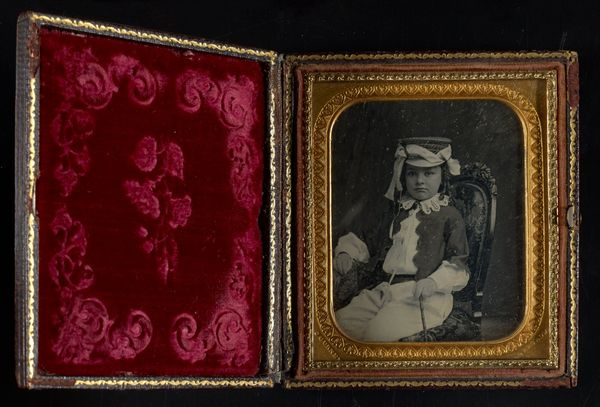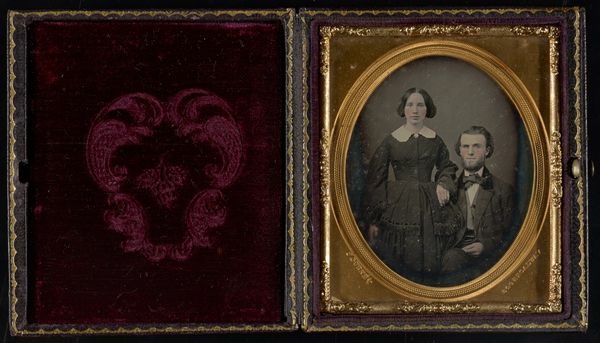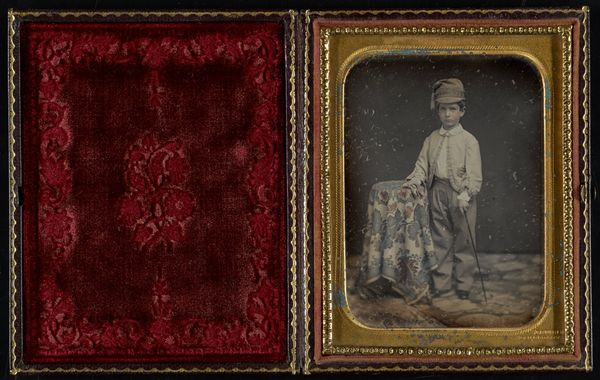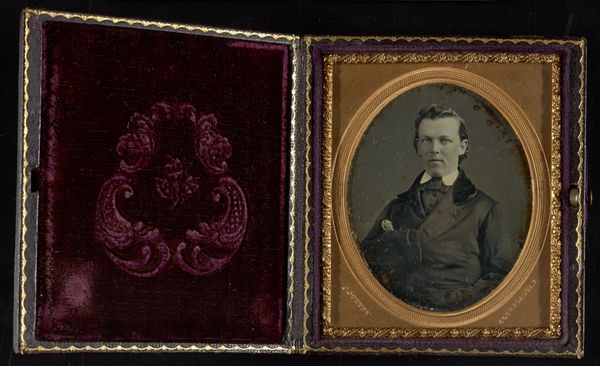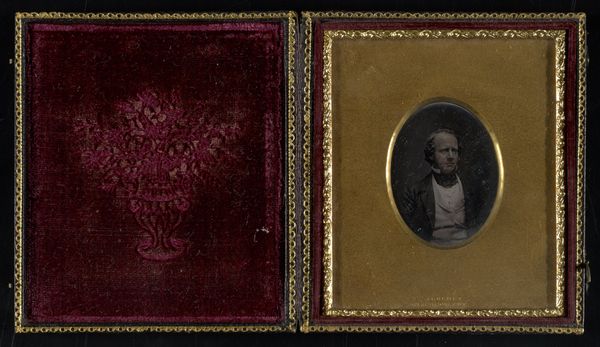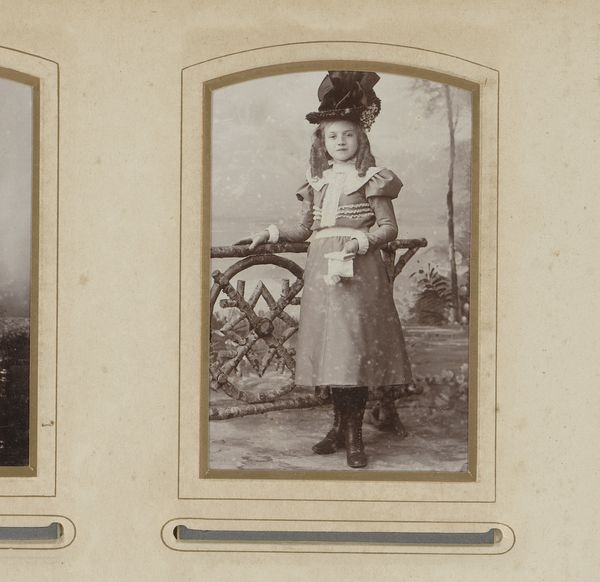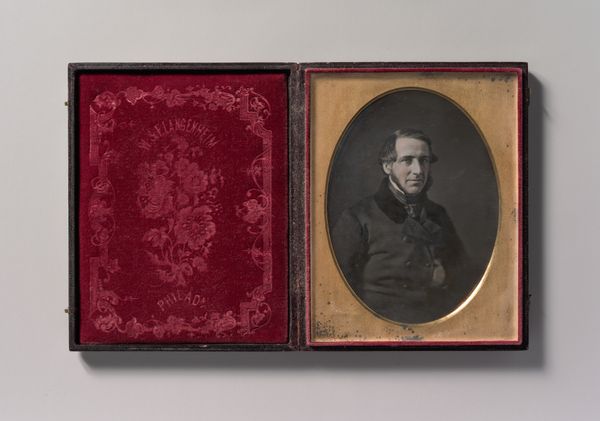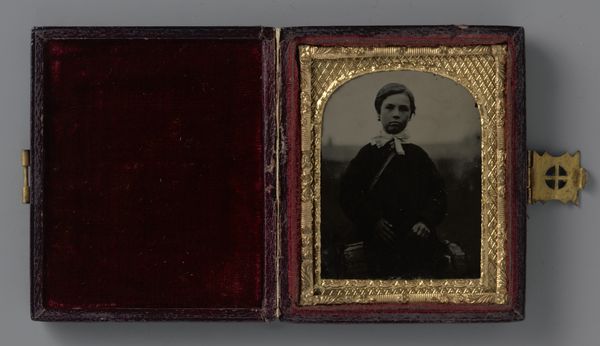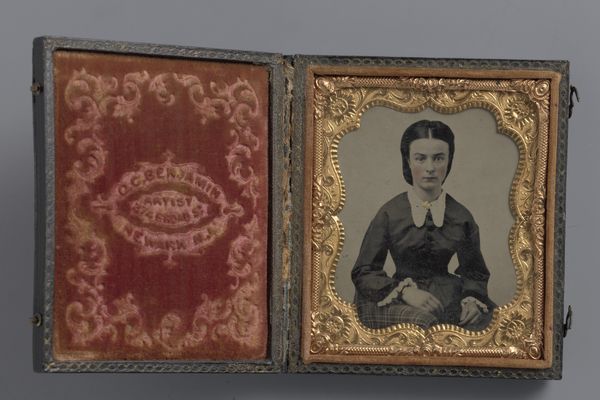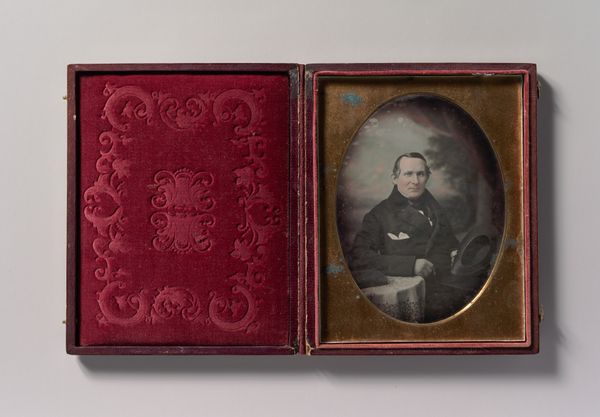
Portret van Walter van Erven Dorens in het uniform van de vrijwillige brandweer (Sansome Hook & Ladder Company No. 3) 1852 - 1858
0:00
0:00
print, daguerreotype, photography
#
portrait
#
16_19th-century
# print
#
daguerreotype
#
photography
#
realism
Dimensions: height 139 mm, width 99 mm, height 154 mm, width 123 mm, depth 21 mm
Copyright: Rijks Museum: Open Domain
Curator: This daguerreotype, likely created between 1852 and 1858, portrays Walter van Erven Dorens in his volunteer firefighter uniform for the Sansome Hook & Ladder Company No. 3. Editor: What strikes me is the palpable sense of pride radiating from this image. The man almost merges with the tools of his trade. You see how even the presentation of the object–the plush velvet casing with the embossed emblem–emphasizes status. Curator: Precisely. Photography, and particularly the daguerreotype, offered a relatively accessible medium for portraiture, democratizing representation to some degree. Consider the societal value placed on civic duty in this era. Joining the voluntary fire brigade was a respectable act. Editor: The material itself contributes to that feeling of prestige. Early photography like this involved considerable manual skill in preparing the plates and handling dangerous chemicals. It wasn't mass-produced. Holding the actual object connects you with the photographer's labor in a visceral way. Curator: His somewhat self-assured posture underscores that notion, as well as his meticulously maintained uniform and, indeed, that magnificent ladder serving almost as a prop for his civic accomplishment. Editor: Note too how his belt echoes a decorative element you see around the edge. It is so much handwork, almost industrial and handcrafted at the same time. Someone put skill into both the uniform he's wearing, the ladder itself and making of this very picture. Curator: I agree. Daguerreotypes became markers of middle-class identity and belonging, solidifying one's place within a growing urban landscape. This speaks to the changing face of citizenship. Editor: Thinking about the communities this work served makes it such an amazing object to contemplate. These works are cultural mirrors, produced through precise technical methods. Curator: Yes, it reveals so much about image making, and society making, at the time. Editor: It truly underscores how artistry resides not only in the subject depicted but also in the material realities of its production.
Comments
No comments
Be the first to comment and join the conversation on the ultimate creative platform.
